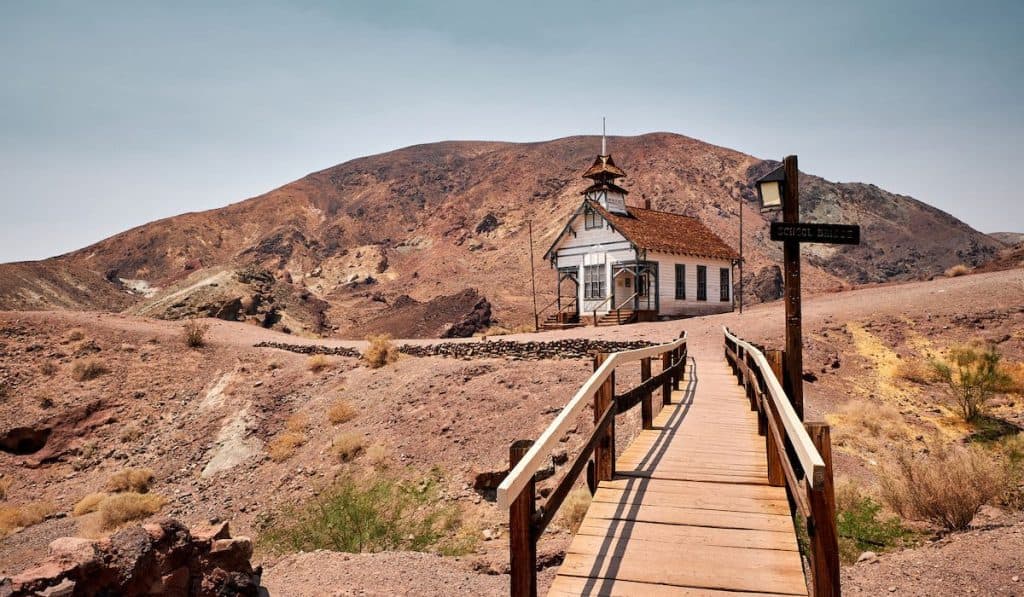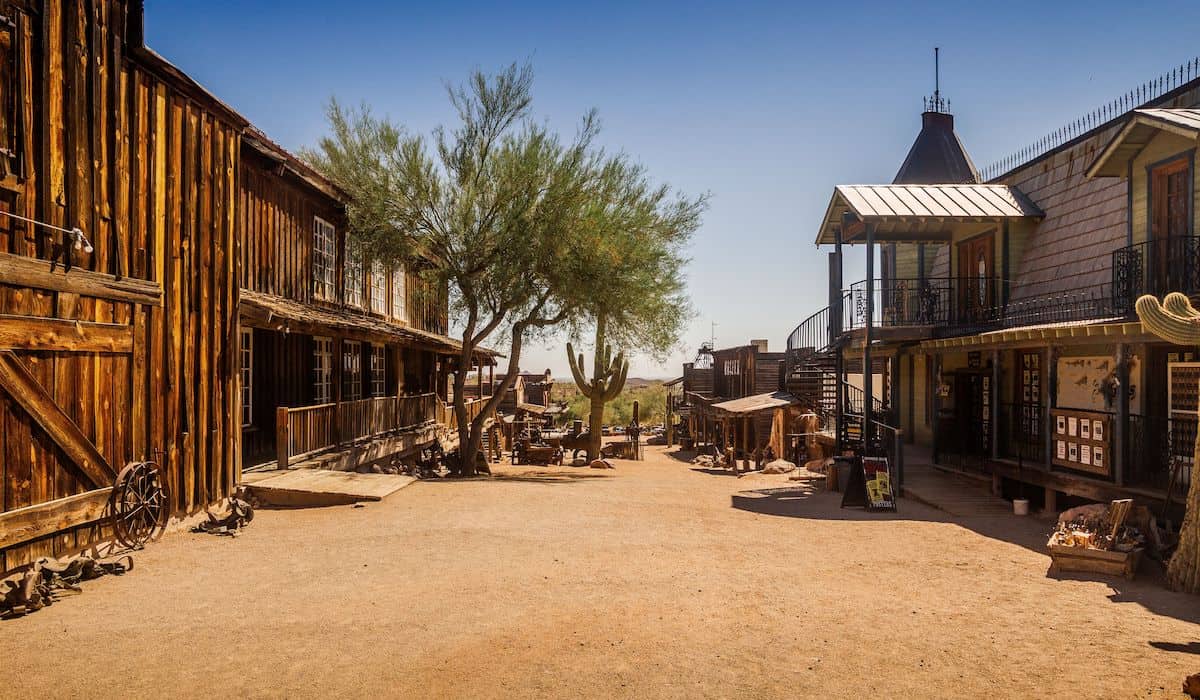If you’re a fan of old western movies, you’ve probably thought about how unique it would be to live in one of the 3,800 ghost towns in America. While living in an abandoned town might seem like a paradise can you legally live in a ghost town?
You cannot legally live in a ghost town. Although the town might look deserted and abandoned, it is likely to be owned privately, or the land has been reclaimed by the government. There is often a good underlining reason why a town has been abandoned.
Squatters
The quiet, the history, the seclusion… they are all valid reasons to want to live in a ghost town. Bring a couple of your closest friends and family, rebuild stores, live in old cabins in the middle of nowhere, live off the grid; what a great way to live.
If you find an empty ghost town, you might start planning everything out, even calling dibs on your own house. Unfortunately, you can’t.
If you move onto land that isn’t owned by you, without written consent between you and a landlord, you are a squatter.
The word squatter is often associated with people who move into an empty home, usually while it’s in the middle of being sold. They have no intention of paying rent, owning the land, paying for utilities; they just want to live in the home for free.
It’s not fair to say that living in a ghost town is completely illegal. There are squatter’s rights, but they are very tricky and can get you into a lot of legal trouble if not done properly.
Adverse Possession
Squatter’s rights are often called adverse possession. This is a doctrine that states that someone can acquire a valid title to land in someone else’s possession as long as the law requirements are met.
The following are requirements pulled directly from Cornell Law School’s overview:
- Continuous–A single adverse possessor must maintain continuous possession of the property. However, the continuity may be maintained between successive adverse possessors if there is privity between them.
- Hostile–In this context, “hostile” does not mean “unfriendly.” Rather, it means that the possession infringes on the rights of the true owner. If the true owner consents or gives license to the adverse possessor’s use of the property, possession is not hostile and it is not really adverse possession. Renters cannot be adverse possessors of the rented property, regardless of how long they possess it.
- Open and Notorious–Possession must be obvious to anyone who bothers to look, so as to put the true owner on notice that a trespasser is in possession. One will not succeed with an adverse possession claim if it is secret.
- Actual–The adverse possessor is actually in possession of someone else’s property. The true owner has a cause of action for trespass, which must be pursued within the statute of limitations.
- Exclusive–The adverse possessor does not share control of the property with any one else (unless in privity with himself). He excludes others from possession, as if he was actual owner.
If you’re interested in learning more about Adverse Possession law, check out this overview by Cornell Law School.
Own Your Own Ghost Town
If you own your own ghost town, you’re allowed to live in it. There’s good news if this sounds like a good idea; there are ghost towns for sale.
Ranging from $60,000 to $4 million, you can buy your very own ghost town. The incredible price difference comes from the size of the ghost town, the location, and how well the town has been preserved.

Owning a ghost town isn’t an easy option, however. There are a few reasons why there aren’t too many people who own a ghost town.
Loans: Getting approval for a house loan is hard enough, but approval for a loan to buy a ghost town is even harder.
Insurance: Trying to get insurance for a ghost town is extremely difficult. Most buildings have been sitting to rot for a few hundred years, and they are incredibly unsafe.
Not to mention that the buildings are not made with today’s standards in mind. Many buildings will need to be torn down and rebuilt to have insurance put on any building if you want to live in it.
This also doesn’t include any hazards from open mines that an insurance broker might not want to insure you for.
Utilities: A lot of ghost towns were left abandoned right around the time electricity was first invented. If populations were diminishing, there was no use putting electricity into any of the buildings, let alone water lines. If you want to live in modern comfort, you’ll have to find access to your own utilities.
A lot of the time, ghost towns are miles and miles away from established cities, and if you might run into a few problems trying to get water out to your town.
Get Paid to Live in a Ghost Town
So you can’t show up and decide to live in a ghost town that belongs to somebody else, and it seems extremely hard to own your own ghost town; now what?
Get paid to live in a ghost town!
Garnet, Montana is willing to pay you to live in this ghost town. This is a government-sponsored volunteer position, but it comes with free room and board.
The Town
Miners in the 1800s moved north from California and Colorado to discover Garnet, named after the ruby-colored semi-precious stones found in the area.
Although there were gold veins in the mountains, the lack of roads and illegal hydraulic mining techniques made it difficult to extract any more gold. Miners moved off to silver mines, but in 1893 the Sherman Silver Purchase Act repeal created panic and the gold miners returned to Garnet.

When the miners came back, Garnet experienced rapid growth. Nearly 1,000 new residents moved in among the returning ones, new stores were built, hotels were put up for the first time, there were two barbershops, a school, a butcher shop, a candy store, and a doctor’s office!
Unfortunately, Garnet’s history didn’t stop there; it had to be considered a ghost town somehow. In 1912, a fire destroyed most of the town, and residents were forced to move on and find new jobs. By 1940, Garnet had lost all of its remaining residents and had become a ghost town.
The Work
The work is easy. Guided tours and working the gift shops are the work requirements in Garnet, which sounds like a pretty sweet deal if you wanted to live in a ghost town.
When you’re not working, you can do as you wish. There is so much to explore when you aren’t working. You can check out the other buildings, leave the town and go for hikes or four-wheeler rides in the surrounding hills, or try your hand at ghost hunting.
That’s right – Garnet is claimed to be haunted. People have claimed they’ve heard eerie piano playing and distant voices coming from the saloon. That would be the best place to start.
Wrapping It Up
While taking up residence in a ghost town is illegal, there are a few ways around it.
The most difficult, and dangerous, is trying to gain adverse possession. Don’t do it this way – you can be fined, or even given time in prison for trespassing if things don’t work out for you. It’s best to avoid squatting and pick one of the other two options.
You could buy your own ghost town! You can keep it to yourself or share it with friends and family to create a community, but this is a lot of work!
The best option to living in a ghost town is to be paid to live in one. Your room and board are covered, and you just have to do some volunteer work giving tours or working the shops. The rest of your time is for you to do what you wish.
Whichever you choose, enjoy every moment living in some of the most historically interesting locations in America.




